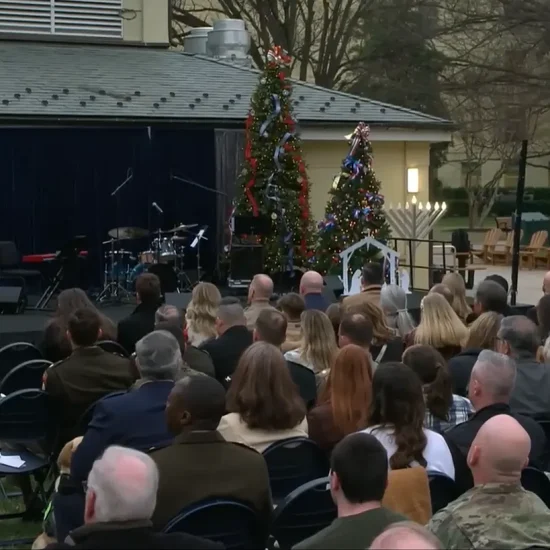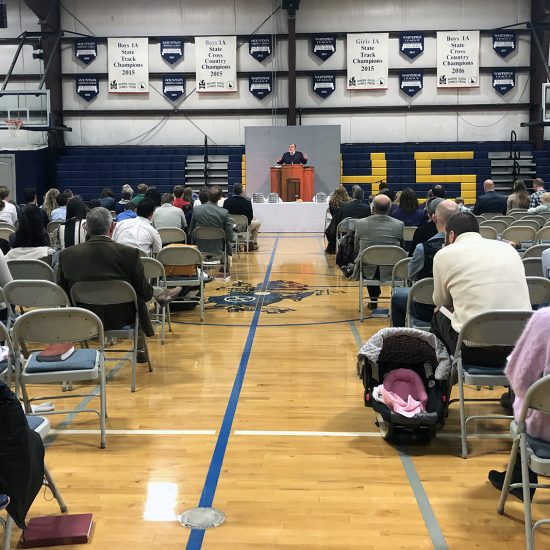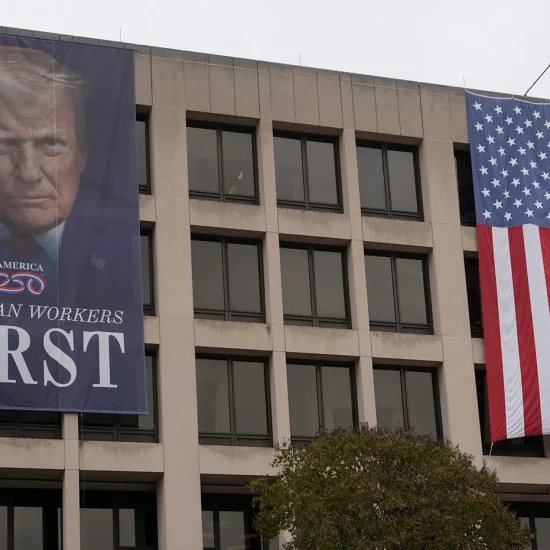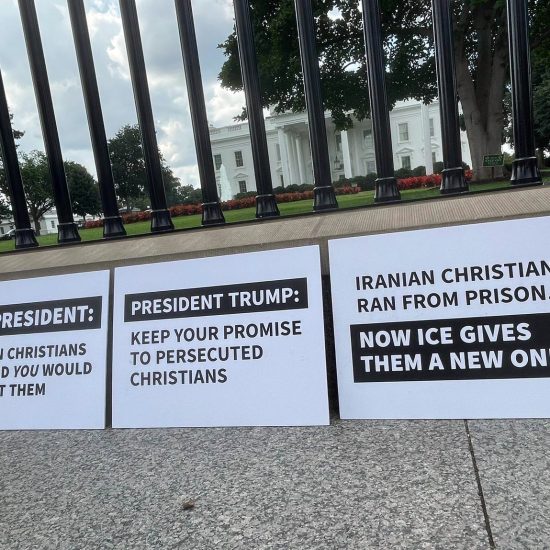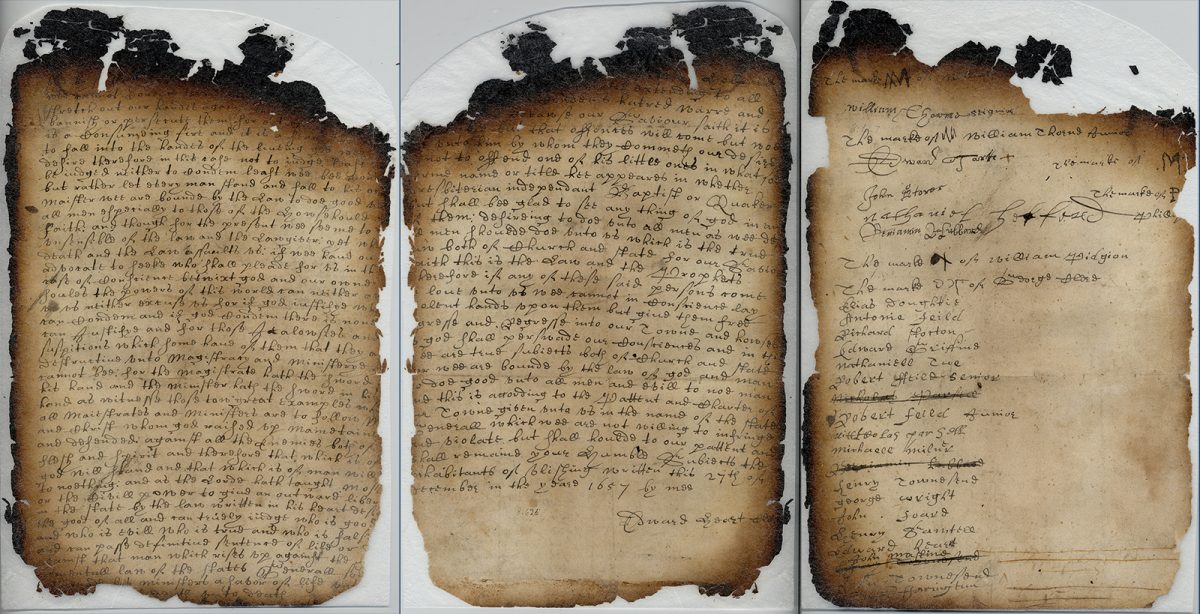
NEW YORK (RNS) — A 17th-century letter considered the blueprint for religious freedom in the U.S. was displayed for the first time in seven years at the New York Public Library on Tuesday (April 8). The Flushing Remonstrance, signed by 30 settlers and opposing a ban on Quaker worship, will be on display through Thursday in the Edna Barnes Salomon Room of the library.
The “Flushing Remonstrance: Let Everyone Remain Free” exhibition celebrates the 60th anniversary of the New York City Landmarks law. For the occasion, the New York City Landmarks Preservation Commission, which selects landmarks and historic sites, partnered with the New York State Archives to display the highly protected document.
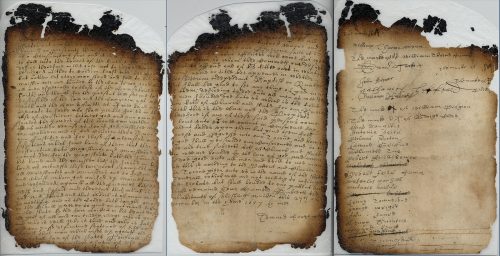
The Flushing Remonstrance letter from 1657. (Images courtesy New York State Archives)
“I always look for some symbolic project to start the anniversary,” said historian Barbaralee Diamonstein-Spielvogel, an organizer of the event and chair of the New York City Landmarks60 Alliance. A preservationist, Diamonstein-Spielvogel thought this forgotten episode of New York’s history would be a perfect fit.
“I was thinking of something worthy. And of course, I think this document is hallowed,” she said of the 1657 letter widely considered to have inspired the religious freedom clause in the First Amendment.
Though most people know about the First Amendment, few outside of Colonial history enthusiasts know of the Remonstrance, noted Brent Reidy, the director of NYPL’s research libraries. The exhibition is a “fantastic opportunity to share a piece of American history that is so vital but maybe is not forward in people’s minds as it could be,” he said.
“Something of this magnitude and rarity is really a special occasion for our public,” Reidy added.
The Flushing Remonstrance was sent by residents of that community (now the Queens borough of New York) to Peter Stuyvesant, the administrator of New Netherland, and condemned his ban of Quaker worship in the Dutch colony.
In 17th-century Colonial America, Flushing stood out in the New World for its tolerance toward religious minorities. In 1645, the Flushing Charter, an agreement between the first English settlers and the Dutch West India Co., granted “liberty of conscience” according to the “custom and manner of Holland” to the new residents of Flushing. The religious openness attracted European immigrants fleeing persecution, including French Huguenots, Swedish Lutherans, and Portuguese Jews.
A 1656 ordinance issued by Stuyvesant banned all religious practices outside of the Dutch Reformed Church. Stuyvesant’s ordinance targeted Quaker worship, promising fines and evictions for anyone hosting a Quaker meetinghouse.
As a result, dissent grew in the colony, and a group of 30 Flushing residents, eight of whom were among the 18 English settlers who founded the town, wrote a letter strongly condemning Stuyvesant’s decision. Their Christian beliefs, read the letter, compelled them to stand up against the ordinance.
“We cannot condemn them (Quakers) in this case, neither can we stretch out our hands against them, for out of Christ God is a consuming fire, and it is a fearful thing to fall into the hands of the living God,” state the settlers.
The document lauds the colony’s religious freedom standards as a great Dutch legacy that should be continued.
“The law of love, peace and liberty in the states extending to Jews, Turks and Egyptians, as they are considered sonnes of Adam, which is the glory of the outward state of Holland,” reads the letter.
The exhibition also features documents from the trial of John Bowne, a Flushing resident who publicly opposed the ordinance. Bowne, an English settler, was arrested and sent back to Europe for hosting Quaker meetings in his house. During his trial with the Dutch West India Co., Bowne invoked the “liberty of conscience” principle enshrined in the Flushing Charter. He was exonerated in 1664 and allowed back to the Colonies.
“That trip took him three years from beginning to end, and it was the first successful legal test of religious freedom in America, and 100 years later, there it was codified in the First Amendment, because of the John Bowne trial, the right to assembly and freedom of speech,” said Diamonstein-Spielvogel, who is also a steward of the New York State Archives Partnership Trust.
Before the archives agreed to lend the Remonstrance, it ensured that the library met the environmental and security standards required to display the letter.
To avoid damage, the letter is rarely exposed to light or transported. As its brown curly edges show, the document was damaged in the 1911 New York State Capitol fire. The letter is now maintained and transported in a special storage unit equipped to monitor humidity level and temperature.
“Whilst we’re very protective of the document, we also appreciate that the purpose of keeping documentary evidence is so that people can see it, appreciate it, enjoy it,” said Monica Gray, Director of Archival Services at the New York State Archives. Seeing “the original gives you that connection with the past, which is, I think, really thrilling for most people.”
The exhibition will also include documents providing context on religious practices of that era in Flushing, such as photographs of a Quaker meetinghouse and records on Quaker practice in the community.

